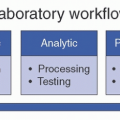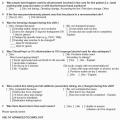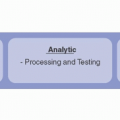Emergency Preparedness: Highly Communicable Respiratory Infections
Walter Zingg
Hanan H. Balkhy
The most recent outbreak of the new coronavirus SARSCoV-2, responsible for the coronavirus disease 2019 (COVID-19), is the seventh coronavirus known to infect humans so far1 and the third to cause an epidemic after SARS CoV and MERS CoV. This outbreak exemplifies the challenges of both emergency preparedness and outbreak management at the local, national, and global levels. A likely transmission from animals-to-humans in a market in China where wild animals were sold is typical for coronaviruses (CoV) that infect humans, although the ultimate reservoir likely will be bats. The virus has ˜80% similarity with the severe acute respiratory syndrome coronavirus (SARSCoV),1,2 which was responsible for a multicountry outbreak largely focused in China, Hong Kong, Singapore, and Toronto in 2002-2004.3 Still, transmission and case fatality rates appear different from SARS. Within a very short period of time, the number of known SARS cases was surpassed, and an estimated R0 value of more than 2.5 was predicted. The initial case mortality rate, however, was only in the range of 1%-2%. The Middle East respiratory syndrome CoV (MERS-CoV) on the other hand, with which genomic similarity is lower (˜50%),2 has a very high reported case fatality rate (˜30%) but is geographically more confined, mainly to the Arabian Peninsula, where MERS today is endemic and continues to show peaks of community-acquired infections during the breeding season of the dromedary camels.4 While SARS-CoV disappeared, we do not yet know what will happen with COVID-19: it is possible that it is here to stay, as is MERS CoV.
The national response to SARS-CoV-2 in China was unprecedented, shutting off the entire city of Wuhan with a population of over 11 million people, even before the World Health Organization (WHO) had announced it as a public health emergency of international concern (PHEIC). The economic impact is expected to be dramatic, exceeding the estimated economic effects of US$ 30-100 billion loss in Southeast Asia due to the SARS-CoV outbreak in 2002-2004.5 While the two outbreaks have similarities, what has changed the most is the speed with which information is made available—the sequence of the virus was known within weeks after the identification of the first case,1,2,6 and the first publications of case series were published <2 months after the first case.7,8 This shapes the perspective of preparedness, since preparedness has two components: a basic component of establishing a baseline structure to remain in place continuously and an adaptive component during an outbreak or a pandemic. The latter needs to be updated regularly based on continuous risk assessment and available resources. During an epidemic, information (vigilance) is the most important task in emergency preparedness. Particularly in the situation of an epidemic or pandemic with an unknown pathogen, such as the new COVID-19 in China, hypotheses which are relevant for preparedness are rapidly confirmed or refuted. Due to the speed with which information is becoming available and facts changing almost every day, time needs to be invested just to keep updated. However, the sooner key determinants are known, the better, such as the potential animal and environmental reservoirs, transmission routes, exposure type, asymptomatic transmission risk and, if present, duration of risk, transmission rate, or if there are super-spreaders.9 Further into an outbreak, it is important to identify whether the pathogen is able to sustain human-to-human transmission and whether the environment is playing a role in transmission or whether it remains an animal originating pathogen.10
Emergency preparedness is not only about readiness for pandemics but preparing for smaller-scale clusters of infections and local outbreaks and epidemics. Healthcare settings should be familiar with identifying patterns of diseases, be it from the community or within the hospital itself and whether pathogen-specific or syndromic in nature. In this chapter, we focus on describing outbreaks using recent and relevant emerging respiratory pathogens as examples, focusing on influenza, SARS CoV, MERS CoV, and COVID-19.
We can distinguish two situations of preparedness: preparedness for seasonal outbreaks due to influenza or other viral respiratory illnesses such as respiratory syncytial virus (RSV) and pandemics due to known or unknown pathogens such as the SARS-CoV, MERS-CoV, or SARS-CoV-2. In general, and outside pandemics such as COVID-19, seasonal outbreaks are much more of a concern for the majority of hospitals. They bind resources both on expenses for patient care and loss of productivity.11,12,13 These seasonal outbreaks limit the patient flow and capacity to treat elective patients and put patients and healthcare personal (HCP) at risk14,15; however, management of such outbreaks can and
should be anticipated. Both strategies have in common the need for strong infection prevention and control (IPC).
should be anticipated. Both strategies have in common the need for strong infection prevention and control (IPC).
INFECTION PREVENTION AND CONTROL IN EMERGENCY PREPAREDNESS
In Saudi Arabia, where 80% of MERS cases occurred, repeated healthcare-associated infections due to MERS CoV were possible because of gaps in IPC practices. Outbreaks were controlled only after stringent IPC auditing and timely identification and isolation of admitted MERS CoV cases (case study one: a national auditing program for IPC in response to MERS CoV). Thus, a comprehensive and functional IPC structure, as defined by the key/core components, is the cornerstone of emergency preparedness.16,17,18 Hospital management needs to invest in a comprehensive IPC program managed by a competent team from where emergency preparedness and outbreak management can be expanded. Details of such programs have been described by accreditation bodies such as the international joint commission (https://www.jointcommission.org/). More information can also be found in the most recent WHO publication on minimum requirements for IPC at the healthcare facility level19 as well as in Chapter 48 “Developing an emergency preparedness program.”
An initial and most critical element in any program is strong leadership support from hospital management, as long as it is honest, unambiguous, and tangible.20 Many healthcare settings have created an accountability arm to their IPC programs, moving toward becoming highly reliable organizations (HROs).21,22 Sufficient compliance with basic and isolation precaution measures in case of an outbreak cannot be implemented rapidly if there is no organizational memory but can be ramped-up quickly if such a culture is already in place. Ideally, a well-structured infection control link nurse program that facilitates rapid implementation of additional IPC practices and acting toward resilience among HCP is needed during any crisis.23,24
CASE
The earliest cases of MERS were identified retrospectively in a hospital-associated cluster in Jordan in April 2012, where the majority of the affected patients were HCP.25 Transmission within healthcare settings has remained a prominent epidemiologic feature of MERS. Today, 2494 cases have been diagnosed with a case fatality rate of 34.4%. Even though MERS outbreaks matched the breeding season of camels, every outbreak was characterized by MERS-CoV transmission in healthcare facilities, mainly due to overcrowding. Almost a third of affected patients in the 2014 MERS outbreak in Jeddah were HCP, and 88% of non-HCP had been exposed to a healthcare facility within the 14 days preceding disease.26 Again, in 2015 and 2016, healthcare-associated outbreaks in Jordan and Saudi Arabia followed the same pattern.4 The first outbreak outside the Arabian peninsula in South Korea, affecting 186 with a case fatality rate 19.4%, was characterized by both intra- and interhospital transmission of MERS-CoV.27 Overcrowded emergency departments, delays in diagnosis, and substandard IPC practices were identified as drivers for MERS in all these outbreaks. To control such outbreaks, Saudi Arabia made IPC a healthcare priority and issued quarterly external audits on the implementation of the WHO core components and MERS-specific elements, such as knowledge of the various case definitions, visual cues in emergency rooms to drive suspected MERS patients away from waiting crowds toward risk-oriented care, and visible promotion of using hand hygiene and personal protective equipment (PPE) by HCP, patients, and visitors. Results of these audits were made public, and noncompliant facilities were granted only a short period of time to comply with the recommendations. In addition, a three-level rapid response team (RRT) was put in place. Healthcare facilities were obliged to notify through a national electronic site linked directly with the ministry of health. Level 1 RRT is then dispatched to ensure proper isolation and contact tracing are in place. If not, a higher level of response with more frequent visits and guidance would take place. The highest level of RRT3 is when a cluster is present in the healthcare facility.
PREPAREDNESS FOR SEASONAL OUTBREAKS OF RESPIRATORY VIRAL PATHOGENS
Preparedness for seasonal outbreaks must be part of the annual emergency preparedness strategic planning, and sufficient resources (human resources, equipment, vaccines) must be allocated for this work. The challenge of seasonal outbreaks is the unpredictability of their dimension with regard to the number of cases, morbidity and mortality and the availability of effective vaccines, and the extent that routine hospital functioning will be impaired. Preparedness for seasonal outbreaks focuses on maintaining normal functioning of the hospital by promoting vaccination of personnel (campaigns, purchase of vaccines), identifying risk areas, determining an escalation plan, and defining priorities of hospital activities to be reduced. Protocols must address all levels of stakeholders, including patients and visitors. They must be clear and field-tested to assure their rapid implementation as soon as this is required. Selective patient groups need enhanced protection such as children with congenital cyanotic heart disease or transplant patients. HCP should recognize their responsibility and accountability during seasonal outbreaks. The United States (US) Occupational Safety and Health Administration (OSHA) recommends a list of actions to be observed by HCP:
To receive recommended vaccines
To comply with hand hygiene and cough etiquette and encourage other HCP, patients, and visitors to follow them also
To stay at home if ill and encourage ill HCP to obtain permission to leave the healthcare facility
To strictly follow IPC practices at work
To use gloves, gowns, surgical masks, and other PPE as recommended by the facility and follow the steps of donning and doffing correctly
CASE
The University of Geneva Hospitals has a standing influenza committee that reports to the infection control committee.28 The influenza committee holds meetings four times a year to prepare the strategy for the following winter season: products are evaluated for rapid diagnostic testing, and both HCP and patient vaccination (geriatrics) campaigns are planned. An executive team holds weekly meetings from fall to implement the predetermined strategy. To implement the strategy, seasonal flu teams work from November until the end of the influenza season to vaccinate personnel and to perform regular audits to assure that the hospital directives are followed. HCP have the choice either to get vaccinated or to wear a face mask during the outbreak period if not vaccinated; stickers on the personal badges show the strategy to which HCP have committed. A total of 6000 HCP are audited during the outbreak period by the flu teams. With this strategy in place, the proportion of vaccinated healthcare workers with patient contact increased to more 50% (vaccination cannot be imposed on HCP in Switzerland). Healthcare-associated influenza has decreased by 50% in the past 5 years.
PREPAREDNESS FOR EMERGING PATHOGENS
Stay updated, free articles. Join our Telegram channel

Full access? Get Clinical Tree






